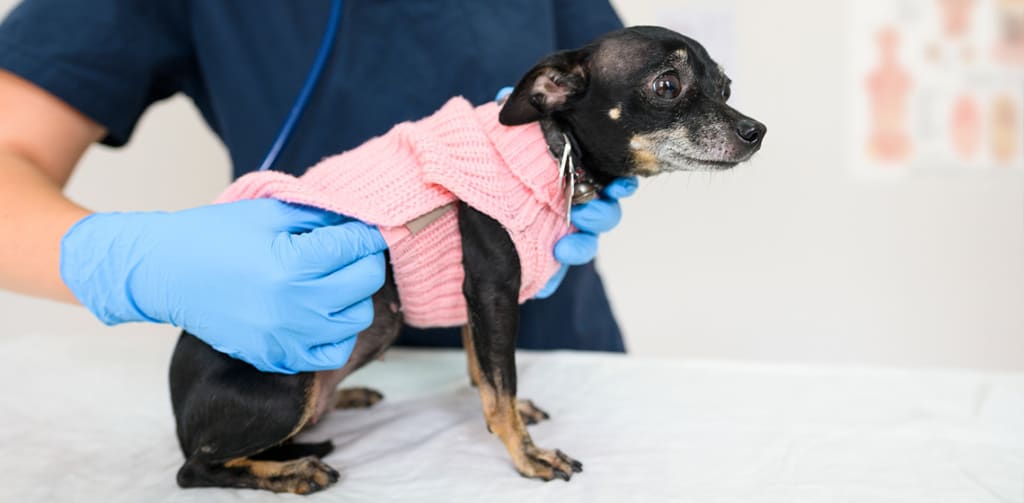If you’re a pet parent to a female dog, you might not be completely familiar with their anatomy, especially their vulva and vagina. However, to recognize when there’s a problem, you need to know what’s normal for your furry princess. So, now’s the time to get up close and personal with your pooch and find out. But when it comes to dog vaginas, what should you expect in terms of size, shape, color, and smell? (If you’re a pet parent to a male dog, you’ll want this blog post instead!)
Table of Contents
What is normal for a dog’s vagina?
Vaginas come in all shapes and sizes, so it’s important to get to know what your dog’s vagina looks like when it’s healthy. However, there are a few guidelines that can help.
Appeareance
When looking at your dog, you’ll probably only be able to see their vulva. The vulva is the name for the two thick folds of skin or labia external to the vagina. The vulvar skin folds are usually haired, and they cover and protect the inner labia (lips) and the vestibule within. When looking at a normal vulva, there should be no lumps or bumps and nothing bulging from within the vagina itself.
Color
The color of the skin and fur of your dog’s vulva should be the same as their skin and hair elsewhere. So, dog to dog, the color may vary, but the color of your dog’s vulva shouldn’t be a surprise compared to the color of the rest of them!
Discharge
A small amount of odorless, clear discharge can be entirely normal for your female dog. If they’re not spayed, you might notice that the amount and type of discharge vary at different times in their cycle too. During their season, you’ll also see some pink or bloody discharge. Click here to find out more about caring for a dog in season.
Size and swelling
Young female dogs usually have pretty small vulvas, especially before their first season. During a season, the size of the vulva increases dramatically, and it becomes very swollen. This is completely normal. It’s also normal if your dog’s vulva doesn’t return exactly to its original size after a season or litter.
Smell
There shouldn’t be a noticeable smell to your dog’s vagina or the skin surrounding it.
If you notice a smell that wasn’t there before, or if your dog’s vulva looks inflamed or has a discharge, it’s time to call the veterinarian.
What are the signs of a problem with your dog’s vagina?
Any changes in your dog’s behavior or how your dog’s vagina looks or smells could be a sign of a vaginal health problem, so look out for these signs:
Color
If the skin or hair around your dog’s vulva is discolored or red, it could mean several things. Firstly, the redness could indicate inflammation or infection, either of the skin surrounding the vagina or the vagina itself. This could also be the case if you notice that the fur has brownish-orange saliva staining or that the skin is darker and hyperpigmented. If it’s not just the skin of their vulva affected, click here to find out about other skin problems in dogs.
Discharge
Although some discharge can be normal, if there’s any smell to it, or if it’s yellow, green, or bloody, it could mean an infection. Although a vaginal infection, called vaginitis, can cause discharge, it’s important to rule out a pyometra. A pyometra is a serious uterus infection, so it’s worth speaking to your veterinarian if your dog has a vagina discharge and is unwell.
Smell
If you notice a foul or unusual smell from your dog’s vagina, it could indicate that the vulvar skin has become infected with bacteria or yeast. However, it could also be a sign of an infection in the vagina or uterus.
Lumps
Just like the skin on the rest of their body, dogs can get lumps on the skin of their vulva. These can be benign or cancerous, so it’s best to get them checked out by a veterinarian. Rarely, you might see a large lump or growth protruding from inside the vulva, and this could be a vaginal polyp, a prolapse, or vaginal hyperplasia.
Pain
If your dog is paying extra attention to their vulva, scooting, whining, or showing other signs of discomfort, this could be a sign of vaginitis or dermatitis.
Licking
If your female dog suddenly starts licking their vulva constantly, or if you notice saliva staining that wasn’t there before, you should get them checked by a veterinarian to see what is bothering them.
When to see a vet
Once you get to know what’s normal for your dog, you’ll be best placed to spot any changes quickly. Even subtle changes in your dog’s behavior could indicate that they have some pain or irritation, so keep a close eye on them. So, if you notice a smell that wasn’t there before, or if your dog’s vulva looks inflamed or has a discharge, it’s time to call the veterinarian.
Most importantly, if your dog isn’t spayed and is vomiting, has a vaginal discharge, or is acting unwell, you should contact your veterinarian urgently in case they have an infected uterus.
Conclusion
It’s normal to feel a bit clueless about your dog’s vagina. After all, it’s not an area you spend much time looking at. However, a basic understanding of what’s normal and what warning signs to look out for will be advantageous in getting help for your canine companion when they need it.
FAQ
Vaginitis is inflammation or infection of your dog’s vagina. This is caused by bacteria or yeasts that can thrive in this moist, warm environment. If your dog has vaginitis, you might notice them licking their vulva a lot, and you might notice other dogs pay more attention to them when out and about. You might also see a discharge or notice a smell. Vaginitis can be treated with oral antibiotics and anti-inflammatories.
If your dog’s vulva is swollen, it could mean several things. If they aren’t neutered, it might mean that they are in season. If they have some red tissue protruding through the vulva, this could be vaginal hyperplasia or a vaginal prolapse. However, if they have been neutered, the swelling could be due to inflammation or infection, especially dermatitis. Some dogs have vulvas that look swollen, but the swelling is residual following a history of breeding or many seasons.

Dr. Hannah Godfrey MRCVS graduated from the Royal Veterinary College in 2011. Although she initially worked in mixed practice treating all species, she found a love for small animal work and has worked exclusively with dogs and cats since 2014. She lives in Wales with her partner, son, and two cats (named Poppy and Ashton Kutcher), and writes comedy fiction in her spare time.








